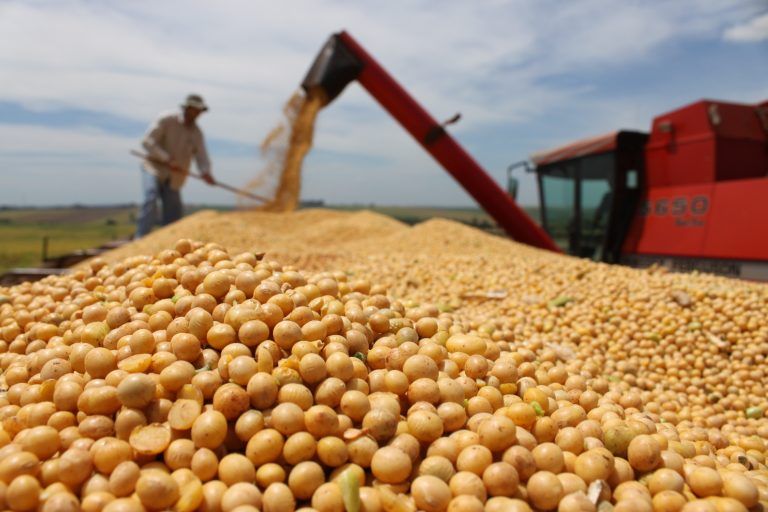
Agribusiness is one of the fundamental pillars of the world economy, playing an essential role in the production, processing and marketing of agricultural products. Within this vast sector, the production and export of grains and oilseeds occupies a prominent place, not only because of its importance in global food security, but also because of its impact on the economic development of many countries.
Grains, such as wheat, corn, rice and barley, together with oilseeds, including soybeans, sunflowers and canola, are an integral part of the agro-industrial value chain, providing inputs for both human and animal feed, as well as for various industries.
Production in a global context
At the international level, grain and oilseed production has shown an upward trend in recent decades, reflecting the growing global demand for food. This increase is associated with multiple factors that have contributed to a favorable environment for the expansion of this sector.
Technological innovation has been important in this process, allowing not only to increase crop yields but also to improve efficiency in the management of natural resources. At the same time, globalization has facilitated the trade of these products, connecting producers with international markets and opening up new opportunities for export.
Factors driving production growth
The growth in production is due to a number of factors that have created an environment conducive to the expansion of the sector. Firstly, the growth of the world population has generated an ever-increasing demand for food, which has led to an expansion of cultivated areas and an increase in agricultural productivity. This trend has been accompanied by a change in food preferences, with a growing interest in healthier and more balanced diets. In this regard, oilseeds, and in particular soybeans, have gained prominence due to their high protein content, which makes them a fundamental component of modern diets.
On the other hand, the development of biofuels has had a considerable impact on demand. The search for sustainable energy alternatives has led to an increase in the production of agricultural raw materials for the generation of biofuels, such as biodiesel and bioethanol.
In addition, advances in biotechnology and digital agriculture have transformed the way grains and oilseeds are produced. Biotechnology has enabled the development of crops that are more resistant to pests and diseases, which has contributed to increased yields and greater stability in production. Likewise, digital agriculture, through the use of sensors, drones and data analysis, has optimized decision-making in the field, improving efficiency in the use of resources and reducing the risks associated with climate variability.
The challenges to be faced
Despite the success achieved, the agro-industrial sector faces numerous challenges that threaten to limit its long-term growth and sustainability. One of the main obstacles is climate uncertainty, which manifests itself in unpredictable weather patterns, prolonged droughts and extreme events such as floods and heat waves.
These phenomena directly affect agricultural yields, increasing crop vulnerability and putting food security at risk in regions dependent on agriculture.
The availability of natural resources, such as water and arable land, is another critical challenge for agribusiness. Growing competition for these resources, coupled with their uneven distribution globally, limits the ability to expand agricultural production. In many regions, water scarcity has become a pressing problem, forcing farmers to adopt more efficient practices in the use of this resource. In addition, soil degradation and loss of biodiversity threaten the sustainability of agricultural systems, requiring comprehensive and sustainable management of natural resources.
Another major challenge is the constant threat of pests and diseases, which can cause damage to crops and reduce crop productivity. Although advances in biotechnology have allowed the development of resistant varieties, the evolution of pests and the emergence of new diseases require continuous monitoring and integrated management strategies.
Price volatility on international markets also represents a challenge for producers. Fluctuations in commodity prices can affect farmers’ profitability, especially in contexts where production costs are high. This phenomenon, influenced by factors such as weather conditions, global demand and trade policies, creates uncertainty in the sector and makes long-term planning difficult.
Finally, the growing pressure to adopt sustainable agricultural practices has become an imperative for agribusiness. The need to reduce the environmental impact of agricultural production, preserve natural resources and mitigate climate change requires a profound change in cultivation practices and resource management. Adopting agroecological approaches, reducing the use of chemical inputs and promoting biodiversity are some of the challenges facing the sector in its quest to achieve a balance between productivity and sustainability.
Technological innovation as a response
In response to the above-mentioned challenges, technological innovation appears as a tool to improve productivity and sustainability in production.
Biotechnology has been one of the areas of greatest advancement, enabling the development of genetically modified crops with specific characteristics, such as resistance to pests, tolerance to adverse climatic conditions and greater nutritional quality. These innovations have improved the resilience of crops to environmental challenges and have contributed to increasing the productivity of agricultural systems. In addition, genetic editing, which allows for the precise modification of genes, has opened up new possibilities for the development of varieties adapted to local conditions and market demands.
Digital agriculture, meanwhile, has revolutionized the way decisions are made in the field. The use of sensors, drones and geographic information systems allows farmers to monitor the conditions of their crops in real time and make precise adjustments in the management of resources such as water, fertilizers and pesticides. This ability to adapt quickly and precisely has made it possible to improve the efficiency of input use, reduce production costs and minimize the environmental impact of agriculture.

Automation and robotics are also transforming farming operations, from planting to harvesting. The addition of advanced machinery enables agricultural tasks to be performed faster and with greater precision than human labor, resulting in increased productivity and reduced labor costs. These advancements not only improve production efficiency, but also enable farmers to better meet the challenges associated with labor shortages and the need to increase production to meet global demand.
The grain and oilseed agroindustry is undergoing a transformation, driven by the interaction of multiple factors that have created a dynamic and constantly evolving environment. Growth in the production and export of these crops has been possible thanks to the combination of technological advances, an increase in global demand and a favorable market environment.
Agribusiness remains a fundamental pillar of the global economy and a key component of food security. As the sector moves towards a more sustainable future, it is necessary to maintain a balanced approach that combines productivity with the preservation of natural resources and the well-being of rural communities.

Grupo Ruiz is a business conglomerate based in the province of Tucumán, Argentina. Founded in 1994 with the creation of Paramérica SA, in a decade it has positioned itself as a world leader in the export of black beans and lemons.
Source: https://reporteasia.com/economia/2024/08/09/agroindustria-granos-oleaginosas-global/

